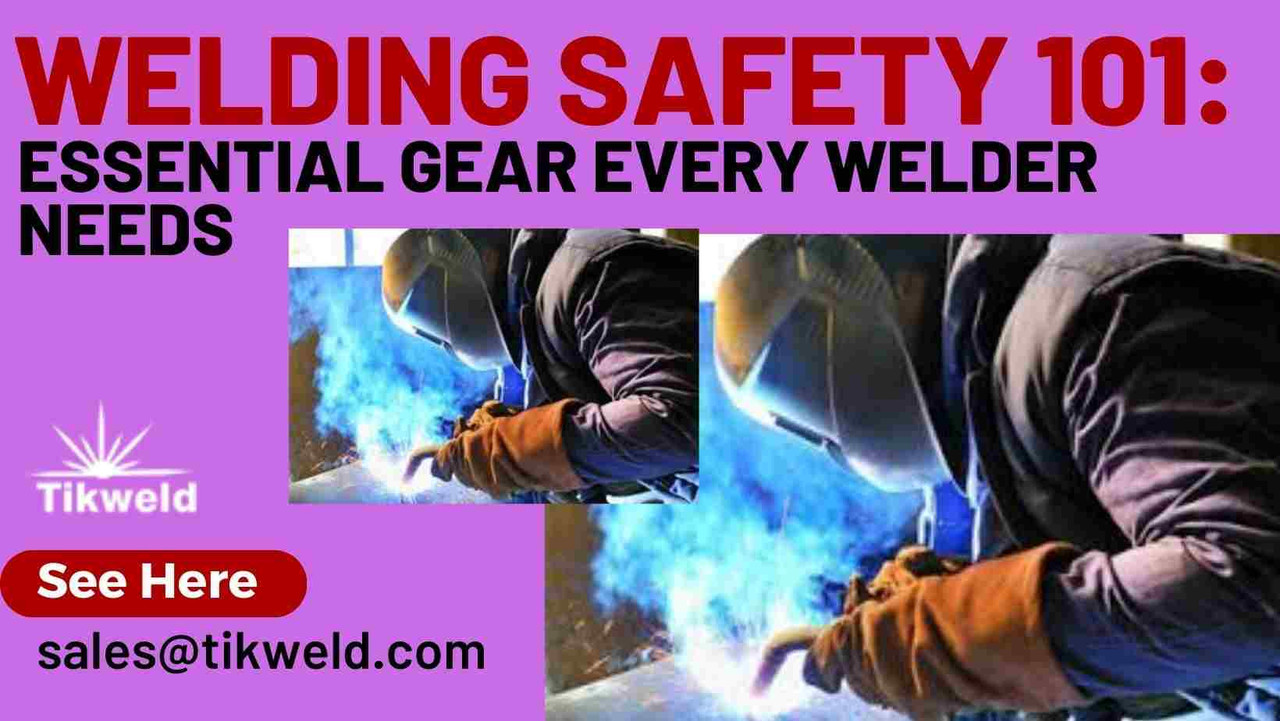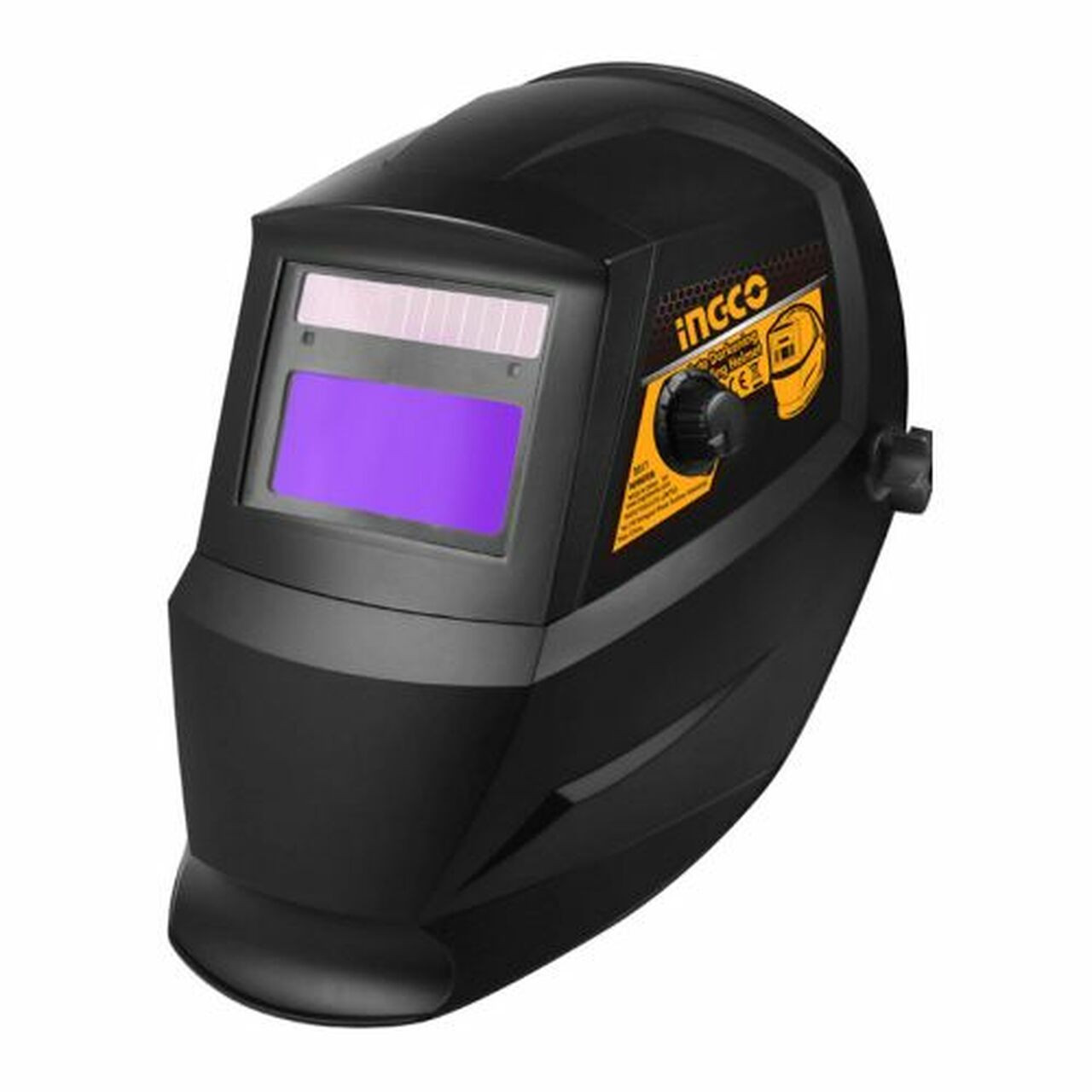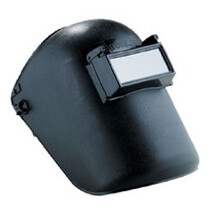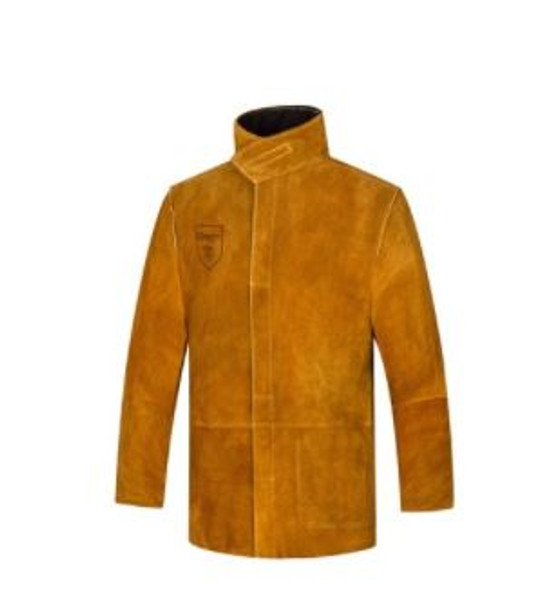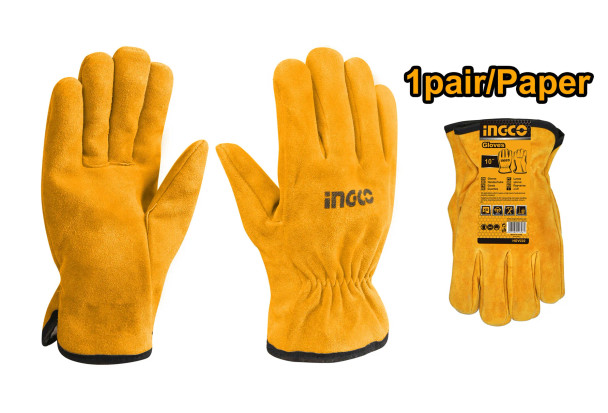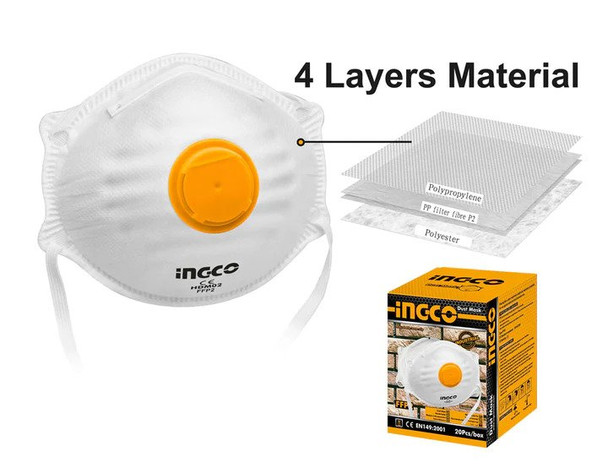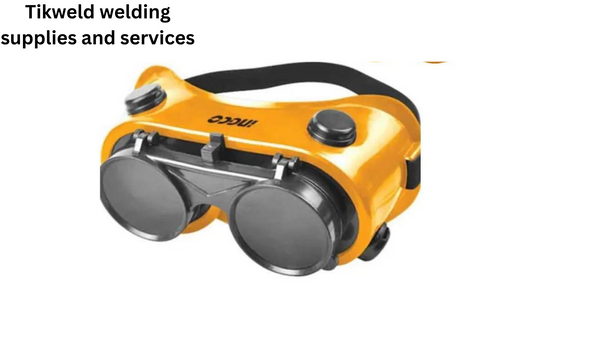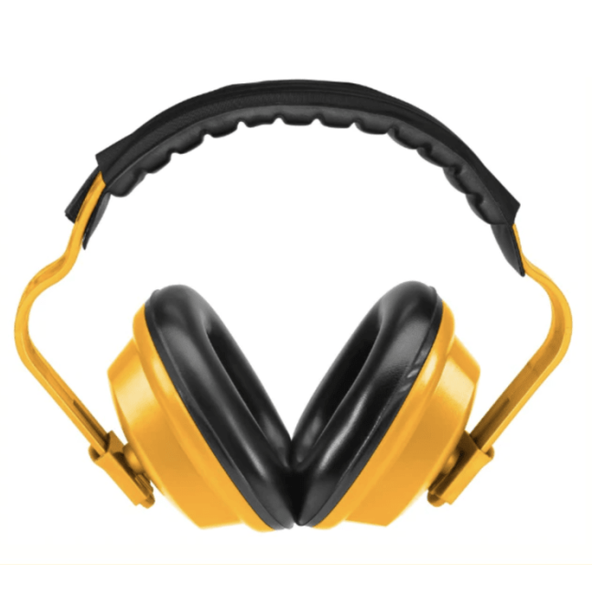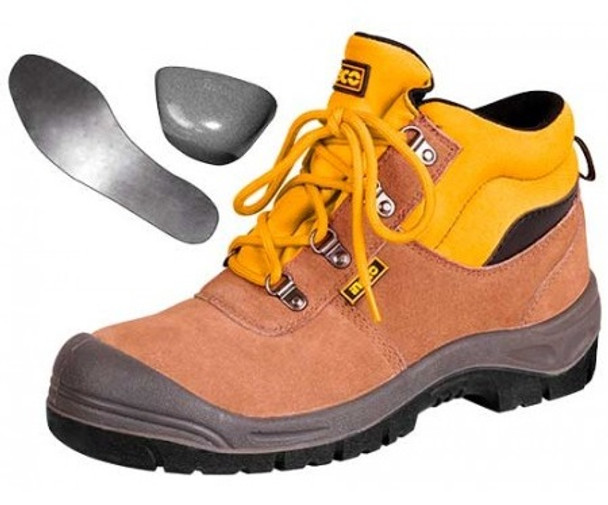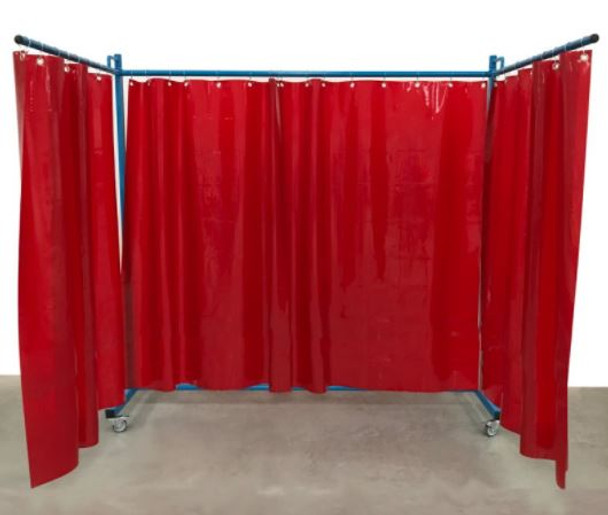Welding Safety 101: Essential Gear Every Welder Needs
Welding safety is a comprehensive set of practices and measures designed to protect welders, their surroundings, and the integrity of their work. It encompasses a range of precautions and equipment aimed at minimizing the risks associated with welding processes. This includes shielding against intense heat, ultraviolet radiation, and potential exposure to hazardous fumes and gases. Welding safety involves the proper use of personal protective equipment (PPE), adherence to established safety procedures, and a thorough understanding of the specific hazards associated with various welding techniques. This article on The Best Safety Work Procedures for Welders in Nigeria will also help enlighten you on welding safety thus create a secure work environment, ensuring the well-being of welders while maintaining the quality and integrity of the welded structures.
Buy Online... INGCO Auto Darkening Welding Helmet AHM008
Ensuring the safety of welders is paramount in any welding operation, and having the right gear plays a crucial role in achieving this goal. Some essential gear every welder needs to boost welding safety includes a welding helmet with the appropriate shading to protect the eyes and face from intense light and sparks. Flame-resistant clothing, such as jackets and pants, shields welders from burns caused by hot metal and sparks. Welding gloves provide crucial hand protection from burns and cuts, while sturdy, closed-toe boots safeguard the feet from falling objects and hot metal. Respirators or masks are vital for protecting welders from inhaling harmful fumes and gases, promoting respiratory health. Ear protection, such as earplugs or earmuffs, guards against the loud noise generated during welding processes. Additionally, safety glasses with side shields offer extra eye protection from flying debris and contaminants. Employing this comprehensive set of safety gear ensures that welders can work confidently and effectively while minimizing the risk of injuries and health issues.
This guide provides a comprehensive overview of the essential safety gear every welder should have in their arsenal. Whether you're a seasoned professional or just starting in the world of welding, prioritizing safety is the first step towards a successful and secure welding experience. Join us as we explore the critical components that make welding both productive and safe.
1. Helmets: Shielding the Welder’s Vision
Importance of Welding Helmets
Welding helmets are a crucial part of any welder’s gear. They serve as the first line of defense against the intense light and heat produced during welding, protecting the welder’s eyes and face from potential harm. The intense light produced during welding can cause a condition called ‘arc eye’ or ‘welder’s flash’, which is a painful inflammation of the cornea. Prolonged exposure can even lead to loss of vision. Hence, a welding helmet is indispensable for safety. These helmets are also designed to provide a comfortable fit, as such they offer not only protection but also convenience, allowing welders to work effectively without compromising their vision or risking injury.
Types of welding helmets and their features
There are several types of welding helmets available, each with its own unique features:
- Passive Welding Helmets: These are the traditional type of helmets that have been used for decades. They have a fixed shade and require the welder to lift the helmet to inspect the workpiece before welding. They are cost-effective and durable, providing basic protection.
- Auto-Darkening Welding Helmets: These helmets have lenses that automatically darken when sensors on the helmet detect the bright light of a welding arc. They are designed to protect against harmful light emissions at all times while also providing clear visibility when the welder is not welding.
Some features to consider when choosing a welding helmet include:
- Shade Level Adjustability: The ability to adjust the shade level based on the welding process and intensity of light.
- Sensitivity and Reaction Time: How quickly the helmet's lens switches from light to dark when exposed to the welding arc.
- Viewing Size: The size of the lens, which affects the visibility and range of vision while welding.
- Comfort and Fit: Padded headbands, adjustable straps, and ergonomic designs that ensure comfort during extended welding sessions.
Buy Online... 3M Welding Helmet Flip Front
2. Protective Clothing: Shielding the Welder’s Body
Overview of Protective Clothing
Protective clothing is an essential part of a welder’s safety gear. It serves as a barrier between the welder's body and potential hazards in the welding environment, including sparks, spatter, and ultraviolet and infrared radiation. The right protective clothing is crafted from specialized materials that not only shields the welder’s body from these dangers but also provides comfort and mobility during work.
Types of clothing for different welding applications
Different welding applications require specific types of protective clothing. Here are a few examples:
- Leather Clothing: Leather jackets, aprons, and leggings provide excellent protection against sparks and spatter, making them ideal for heavy-duty welding tasks.
- Flame-Resistant Clothing: Often made from treated cotton, flame-resistant clothing is designed to self-extinguish after exposure to sparks or flames. This type of clothing is suitable for light to moderate welding applications.
- High-Visibility Clothing: For welders working in low-light conditions or busy work sites, high-visibility clothing with reflective strips can enhance safety by making the wearer more visible to others.
Buy Online... Rhino Weld Welders Split Leather Welding Jacket
3. Gloves: Safeguarding the Welder’s Hands
Significance of Welding Gloves
Welding gloves are a crucial part of a welder’s safety gear. They protect the hands from a variety of hazards such as heat, sparks, sharp metal edges, and electrical shocks. The significance of welding gloves lies in their ability to offer thermal insulation, durability, and dexterity simultaneously. They not only shield the hands from immediate dangers but also provide the flexibility and grip required for precise handling of welding tools and workpieces.
Varieties of welding gloves based on materials and applications
The type of welding gloves needed can vary based on the welding process, the materials being welded, and the specific conditions of the work environment. Here are a few examples:
- Leather Gloves: Made from durable materials like cowhide, pigskin, or deerskin, leather gloves offer excellent protection against heat and sparks. They are commonly used in stick welding applications.
- TIG Welding Gloves: TIG (Tungsten Inert Gas) welding requires a high level of precision, and thus, TIG welding gloves are typically made from softer, thinner materials like goatskin. This allows for better dexterity while still providing protection.
- MIG Welding Gloves: MIG (Metal Inert Gas) welding generates a lot of heat and sparks. Therefore, MIG welding gloves are typically thicker and more robust, often made from cowhide or pigskin.
- Cut-Resistant Gloves: These gloves are designed with materials like Kevlar to protect against cuts and punctures, which can be particularly useful when handling sharp metal pieces.
- Synthetic Gloves: While leather is the traditional material for welding gloves, there are synthetic options available that offer heat resistance and protection. Some synthetic gloves incorporate materials like Kevlar, Nomex, or other advanced fabrics that provide enhanced protection against heat and abrasions.
Buy Online... Welding Leather gloves - INGCO HGVW02
4. Respiratory Protection: Ensuring Clean Air for Welders
Importance of Respiratory Protection
Welding processes can release a variety of harmful gases and particulates into the air, which can pose serious health risks to welders if inhaled. These can include metal fumes, gases such as carbon monoxide, nitrogen oxides, and ozone, as well as dust and other particulates. Long-term exposure can lead to respiratory diseases, neurological disorders, and even cancer. Therefore, it is crucial for welders to use appropriate respiratory protection to ensure they are breathing clean air.
Types of respiratory protective equipment for welders
There are several types of respiratory protective equipment (RPE) that welders can use, depending on the specific hazards they are exposed to and the nature of their work. These include:
- Disposable Respirators: These are lightweight masks that cover the nose and mouth, designed to protect against low levels of dust and other hazards.
- Reusable Half or Full Face Masks: These offer a higher level of protection and can be fitted with different types of filters to protect against specific hazards.
- Powered Air Purifying Respirators (PAPRs): These use a battery-powered fan to draw air through a filter, providing clean air to the wearer. They offer a high level of protection and are often used in situations with high levels of hazardous substances.
- Supplied Air Respirators (SARs): These provide clean air from a safe source, such as a compressed air tank. They are used in situations where the air is highly contaminated and cannot be adequately filtered.
Buy Online... Dust Mask with Breath Valve INGCO HDM02 (N95)
5. Safety Glasses and Face Shields: Protecting the Welder’s Face
Role of Safety Glasses And Face Shields
Safety glasses and face shields play a crucial role in protecting welders from a variety of hazards, including harmful ultraviolet and infrared radiation, which can cause serious eye injuries such as “welder’s flash” or arc eye. They also protect the eyes and face from hot slag, metal shavings, and other debris that can be produced during welding, cutting, or grinding operations. In addition, they can help to prevent exposure to harmful gases and fumes.
Choosing the right eye protection for welding tasks
The choice of eye protection depends on the specific welding task and the associated risks. Here are some factors to consider:
- Shade Levels: Welding operations vary in intensity, so selecting safety glasses or face shields with appropriate shade levels is crucial. Different welding processes demand different shades. For example, gas welding may require shade 5 glasses, while arc welding may require a darker shade.
- Lens Material: Safety glasses and face shields are made from various materials, including polycarbonate, which is impact-resistant and suitable for most welding applications. Some lenses may also have anti-scratch or anti-fog coatings for enhanced durability and visibility.
- Comfort and Fit: Ensuring a comfortable fit is vital as it encourages welders to wear their eye protection consistently. Adjustable temples, padded frames, and lightweight designs contribute to comfort during extended use.
- Compatibility with Other PPE: Consider compatibility with other protective equipment such as welding helmets or respirators to ensure seamless and effective use of multiple safety gear pieces.
- Durability and Maintenance: Choose eye protection that is durable and easy to maintain. Regular inspection and replacement of scratched or damaged lenses are crucial for sustained effectiveness.
Buy Online... Ingco welding goggles 2 in 1 flip top
6. Ear Protection: Preserving the Welder’s Hearing
Impact of Welding On Hearing
Welding operations can produce high levels of noise, which can lead to hearing loss over time if adequate protection is not used. Prolonged exposure to these noise levels can result in temporary or even permanent hearing loss. In addition, certain types of welding can produce ‘ultrasonic noise’, which is above the range of human hearing but can still cause damage.
Types of ear protection for welders
There are several types of ear protection available for welders:
- Earplugs: These are inserted into the ear canal to block noise. They are lightweight, portable, and can be disposable or reusable. Some are custom molded to fit the individual’s ear.
- Earmuffs: These fit over the entire outer ear to form an air seal and are held in place by an adjustable band. They are generally more protective than earplugs, but can be less comfortable to wear for long periods, especially in hot environments.
- Canal caps: These are similar to earplugs, but are mounted on a flexible plastic band. They can be quickly and easily inserted and removed, making them convenient for situations where noise levels fluctuate.
Buy Online... Ingco Ear Muff HEM01
7. Welding Boots: Safeguarding the Welder’s Feet
Importance of Welding Boots
Welding boots are a crucial part of a welder’s personal protective equipment. They protect the welder’s feet from various hazards in the welding environment, such as falling objects, sharp metal pieces, hot sparks, and molten metal. They also provide electrical insulation and resistance to heat, flame, and chemicals. In addition, good welding boots offer comfort and support, reducing fatigue during long working hours.
Features to consider in welding footwear
When choosing welding boots, several features should be considered:
- Material: The boots should be made of durable, heat-resistant materials like leather. The material should also be water-resistant to protect against spills and splashes.
- Toe Protection: Look for boots with steel or composite toe caps for protection against falling objects and compression injuries.
- Sole: The sole should be slip-resistant and puncture-resistant. It should also be resistant to heat and electrical hazards.
- Comfort: Comfort is crucial for long working hours. Look for boots with good arch support, cushioning, and breathable lining.
- Design: High-top designs provide better protection against sparks and molten metal. A quick and secure fastening system, like lace-up with a side zipper, is also beneficial.
Safety Boot SSH02S1P INGCO
Buy Online... Safety Boot SSH02S1P INGCO
8. Welding Curtains and Screens: Enhancing Welding Zone Safety
Overview of Welding Curtains And Screens
Welding curtains and screens are safety tools used in welding operations to protect workers and bystanders from the hazards associated with welding, such as bright arcs, sparks, spatter, and harmful UV radiation. They are typically made from flame-resistant materials and come in various colors, with darker colors providing higher levels of protection. These barriers not only safeguard individuals in the vicinity but also prevent damage to nearby equipment and materials.
Creating a safe welding environment with curtains and screens
Implementing welding curtains and screens in your workspace can significantly enhance safety. Here’s how:
- Isolate the Welding Area: Curtains and screens can be used to create a designated welding area, keeping bystanders at a safe distance and preventing accidental entry into the welding zone.
- Protect Against Harmful Radiation: Welding processes produce intense light and harmful UV radiation. Welding curtains and screens help shield against these, protecting workers’ eyesight and skin.
- Prevent Fire Hazards: Sparks and spatter from welding can ignite flammable materials. By containing these within the welding area, curtains and screens reduce the risk of fire.
- Improve Visibility: Transparent or semi-transparent welding curtains allow for safe observation of the welding process without exposure to the harmful light and UV radiation.
Buy Online... WELDING CURTAINS
Related article
12 essential welding equipment for fabrication work
Understanding the different types of safety Lanyards and their uses
Conclusion
In the realm of welding, safety is paramount. This article has highlighted the importance of various welding safety gear, including welding helmets, gloves, jackets, boots, and the often overlooked but equally crucial welding curtains and screens. Each piece of equipment plays a vital role in protecting welders from the numerous hazards associated with welding processes, such as intense light, harmful UV radiation, sparks, spatter, and potential fire risks.
However, it’s essential to remember that safety gear is just one aspect of welding safety. A safety-first approach should permeate all aspects of welding practices. This includes proper training, regular equipment inspection, maintaining a clean and organized workspace, and fostering a culture of safety where precautions are not just followed but are an integral part of the workflow.
By prioritizing safety and utilizing the appropriate safety gear, we can ensure that welding remains a productive and safe occupation, minimizing risks and maximizing efficiency. Remember, in welding, as in all things, safety should never be compromised.

